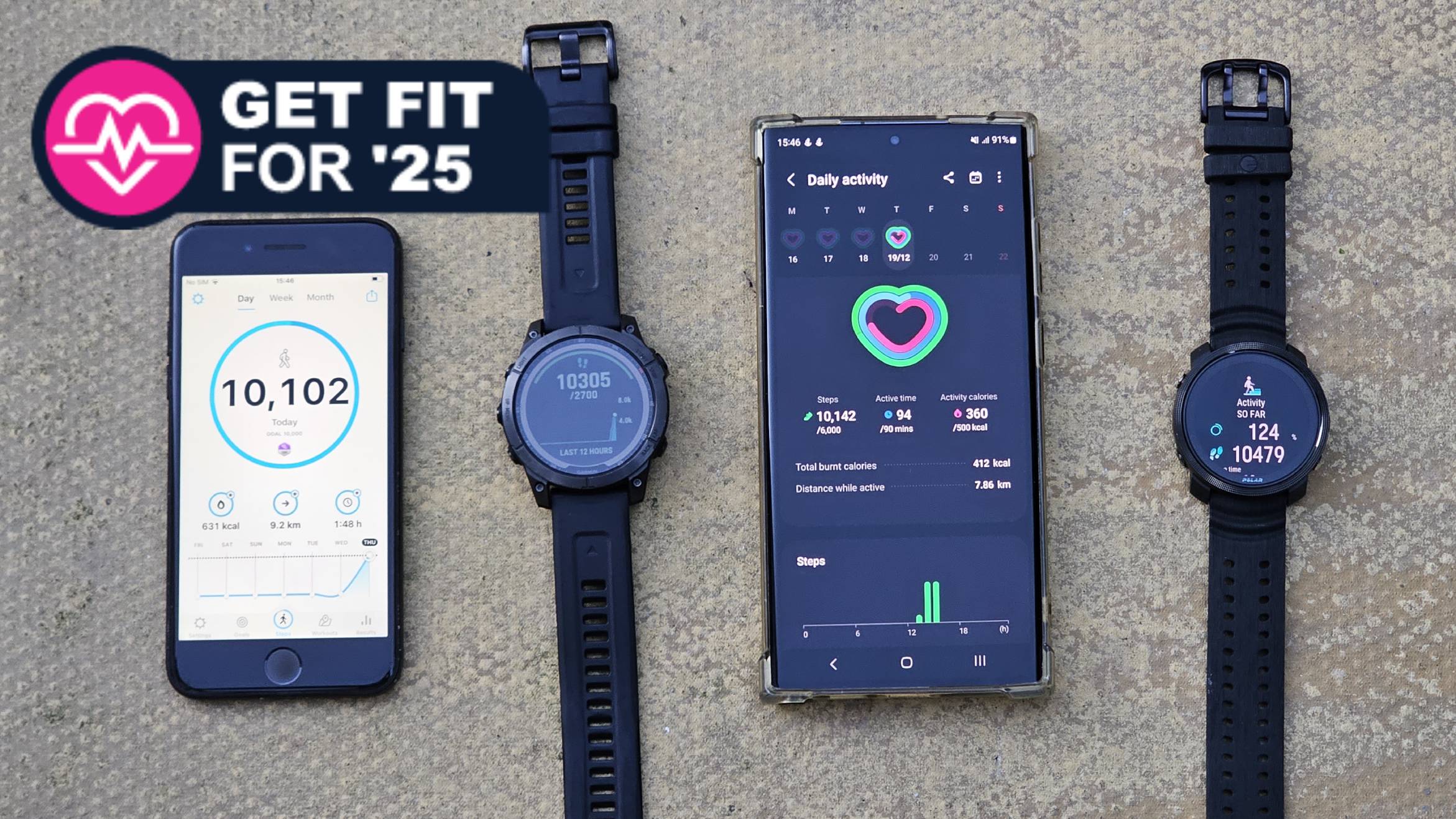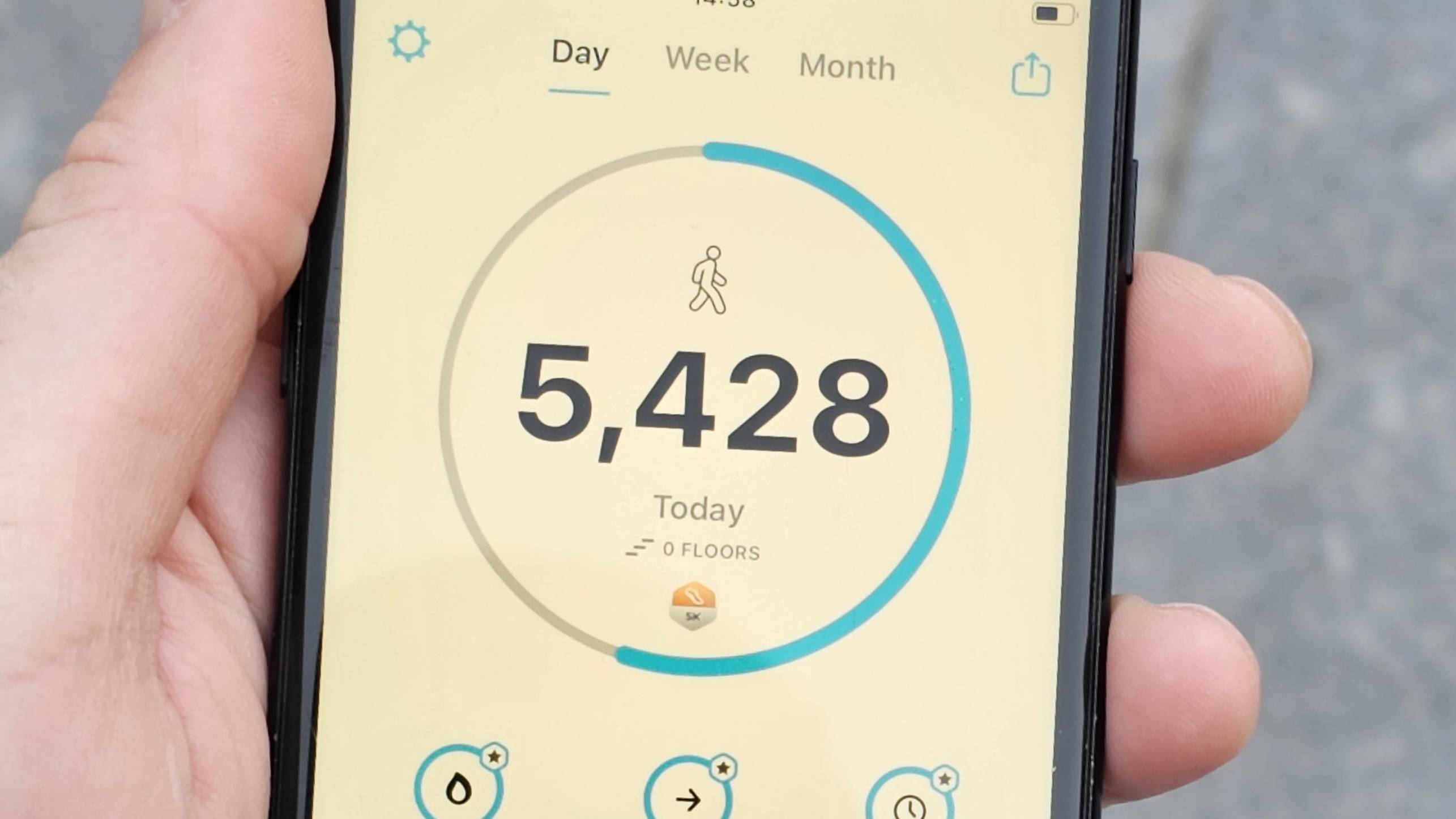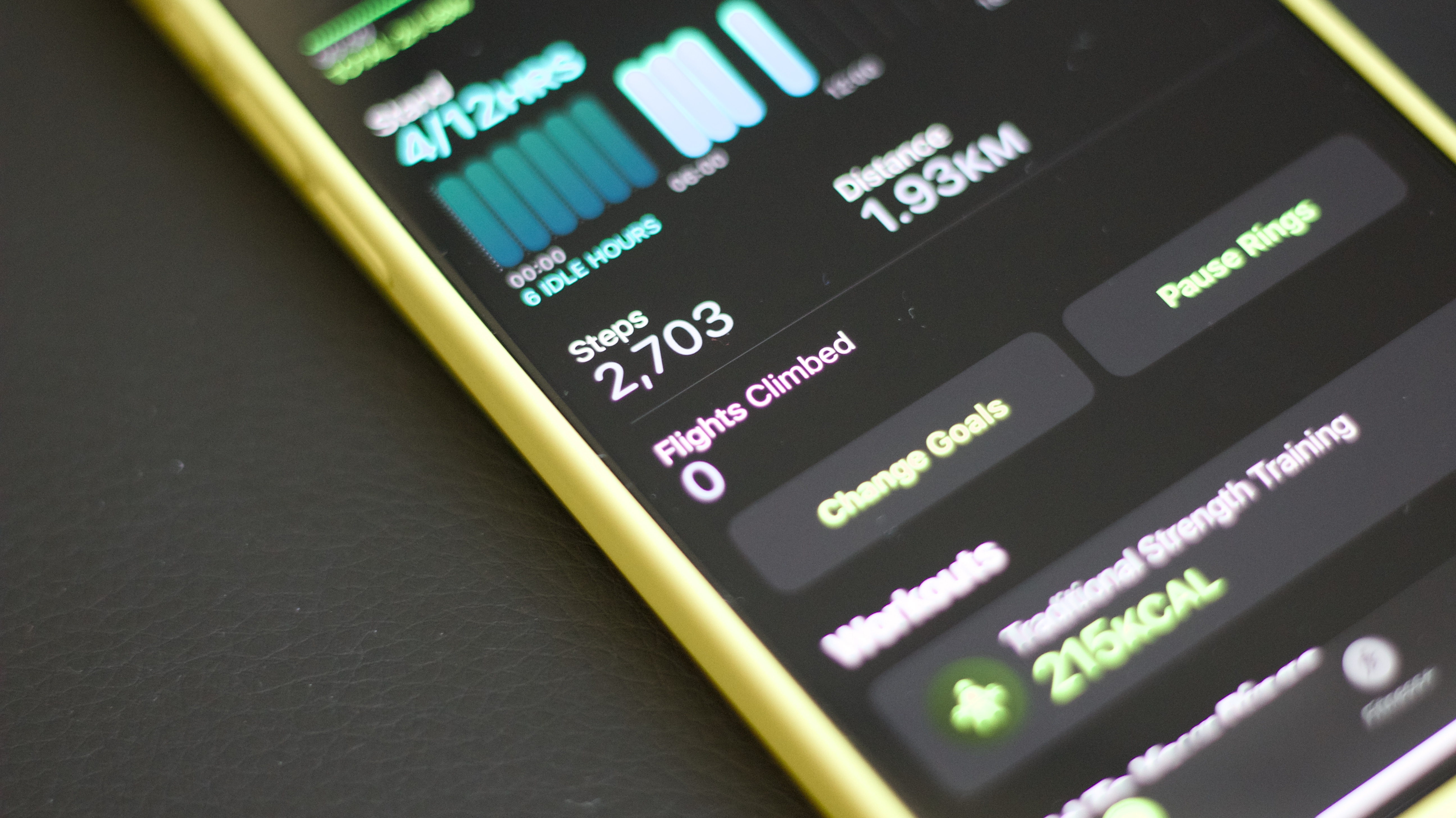
This article is part of TechRadar's Get Fit For '25 series. All week long, we're publishing articles relating to fitness, health and the tech we're using to improve in 2025. You can view all the other articles in this series here.
Counting steps has become a universal way for most people to measure their daily activity – probably because it’s simple, accessible and easy to fit into daily life. But with a plethora of apps and gadgets promising accurate results, it got me thinking: are all step trackers created equal?
To put this to the test, I tracked a 10,000-step journey using four different devices, all running on different, renowned platforms. I armed myself with (a pretty retro) Apple iPhone 7 running the Apple Health app in my left trouser pocket and, in my right, one of the best Samsung phones, the Galaxy S23 Ultra with the Samsung Health app installed. On my wrists, I sported two of the best running watches: the new Polar Vantage M3 smartwatch on my right and the Garmin Fenix 7 on my left. My goal was simple – to see how their step counts stacked up across a brisk 9km walk through Manchester city centre and back.
Would the fitness-focused smartwatches – which also track heart rate and other vitals – outshine the trusty smartphones that merely sat in my trouser pockets? Or would this experiment show that you don’t need fancy tech to track your steps accurately? Here’s what I discovered after using all four devices at the same time.
Noticeable differences
My 10,000-step walk was fairly straightforward: I covered 4.5km from my home to the other side of Manchester city centre, took a short break and walked back – a total of roughly 9km. All devices were set to zero before I set off to ensure a fair comparison.
After 1.5 hours of brisk walking, I paused (read: had a sit down in a café with pastry in hand) to check the halfway point readings. These were as follows:
Halfway point results:

- Apple Health app: 5,003 steps
- Samsung Health app: 5,022 steps
- Polar Vantage M3: 5,276 steps
- Garmin Fenix 7: 5,120 steps
There were already small, but notable discrepancies between the different platforms. The step counts on the two phone apps were closely matched, with just a 19-step difference, which isn’t bad for non-fitness focused gadgets shoved in pockets. The smartwatches, however, varied more – the Polar clocked in 273 steps higher than the iPhone, while the Garmin was more middle-ground at 117 steps above the Apple count.
On the return leg, I took extra care in ensuring my pace was consistent, sticking to well-trodden paths and keeping my stride as steady as possible. By the time I got home, here’s what the final step counts looked like:
Final results:

- Apple Health app: 10,102 steps
- Samsung Health app: 10,142 steps
- Polar Vantage M3: 10,479 steps
- Garmin Fenix 7: 10,305 steps
Unsurprisingly, none of the devices reported the exact same total. However, the Apple and Samsung phone apps proved to be remarkably consistent with one another, both at the halfway point and at the end, with less than a 1% variance.
The Polar Vantage M3, meanwhile, consistently overshot the mark, adding an extra 379 steps by the end of the walk compared to the iPhone. That’s roughly a 3.8% difference – enough to slightly skew fitness goals over time, especially if you’re relying on exact data for training, assuming this is the most inaccurate by nature of being the outlier.
The Garmin Fenix 7, while slightly overcounting compared to the phones, was less dramatic than the Polar, adding just over 200 steps above the Apple tally. It seemed to strike a balance between sensitivity and accuracy, which doesn’t surprise me – Garmin has a reputation for reliability among fitness enthusiasts.
Which gadget is the most accurate?

Determining “accuracy” is tricky without knowing the true step count – a problem that plagues all step trackers. Factors like stride length, arm movement and even how a device is worn can influence readings. That said, my takeaway is this: phones are surprisingly accurate for everyday step tracking.
The Apple and Samsung apps, nestled safely in my pockets, kept pace with each other consistently, even when compared against the two top-tier smartwatches. This suggests that if you’re using your phone to track steps, you’re probably getting a solid estimate – and it won’t cost you a penny beyond the device itself.
The Polar’s higher step count could stem from its sensitivity to wrist movements, especially since it was strapped to my right wrist on my dominant arm. This might interpret extra steps during non-walking activities like turning corners or gesturing. The Garmin, on the other hand, seemed to lean more conservatively but still edged over the phone tallies.
Do you need wearables to track steps?
While the Polar and Garmin offer plenty of advanced metrics and features that go beyond step tracking – like heart rate, GPS routes and workout summaries – my walk experiment has shown that they’re not strictly necessary if your goal is simply to hit your 10,000-step target each day.
That said, smartwatches do have their perks. They’re great for those who want a more comprehensive picture of their fitness, including calorie burn, sleep tracking and VO₂ max measurements. Plus, they’re often more convenient to glance at mid-walk than pulling out a phone. There are discrepancies from unit to unit because each watch uses different algorithms and technology, but they’re generally in the right ballpart. We found similar differences between premium Garmin and Apple Watches when testing them against each other during a marathon.
However, if you’re just looking to monitor your movement and improve daily activity, a smartphone app will do the job perfectly well if that’s all you intend to do. As my test proved, they’re more than up to the task, and you can save yourself hundreds of pounds in the process. You certainly don’t need to splash out on fancy gadgets to track your steps accurately – your pocket companion can do the job just as well.







